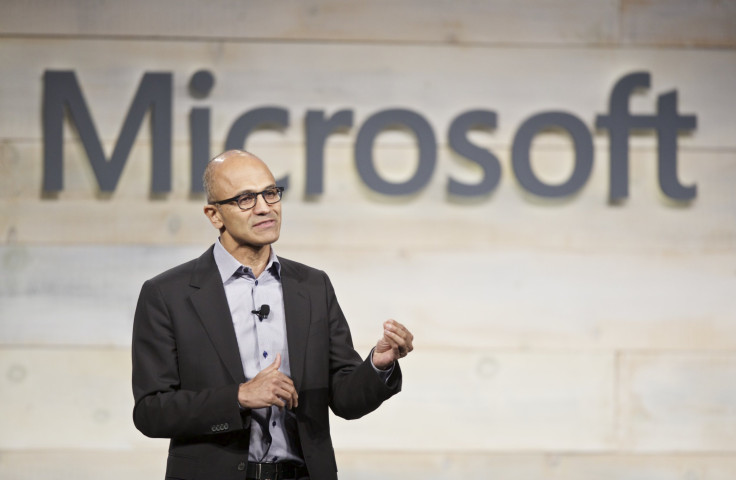Windows 10: Microsoft’s Last, Best Chance To Turn PC Dominance Into Mobile Relevance

Microsoft is a mobile also-ran. Its $7.2 billion bet on Nokia has failed to pay off, and since closing its acquisition of the Finnish handset maker last April, the company has made almost no inroads against Apple and Google’s lock on the smartphone market. Meanwhile, Chinese upstarts such as Xiaomi and ZTE Corporation are only adding to the competition. But officials at Microsoft believe they have an ace in the hole that's yet to be fully exploited -- that is, 1.5 billion worldwide users on Windows PCs.
Microsoft’s challenge? Convert a good chunk of those PC users to mobile customers by offering them an experience they’re already familiar and comfortable with. To date, the company has released a hodgepodge of apps and services that translate only more or less well from the desktop to the phone, but all that could change with Windows 10. Company officials previewed the operating system, set for release later this year, on Wednesday at an event at Microsoft’s Redmond, Washington, headquarters.
“We want to move from people needing Windows, to choosing Windows, to loving Windows,” Satya Nadella, now almost a full year into his tenure as Microsoft’s third CEO, said. “Windows 10 is built for a world where everything or nearly everything at home and at work is digitally mediated.”
Central to Microsoft’s plan to put Windows in front of as many customers as possible, regardless of the device, is the fact that unlike previous generations of the operating system, Windows 10 provides a common software environment for PCs, tablets, smartphones, gaming systems such as the Xbox One, and even futuristic platforms such as the new HoloLens.
The idea is to make the transition from the desktop -- where Microsoft still holds almost 90 percent of the market, according to Net Applications -- to mobile as painless as possible for both users and developers. Use, or write, an app for one device, and the experience will be the same on any other. “The hope is they can attract the developers [for mobile] that they have not been able to so far,” Michael Silver, vice president and distinguished analyst at Gartner, said.
“And the message to consumers is that if you use a Windows PC, there are good reasons to have a Windows phone; you will get these common applications and experiences across devices,” Silver said.
Indeed, Microsoft officials on Wednesday showed off a number of “universal apps” for Windows 10 that work, look and feel the same regardless of hardware. Chief among them was Office for Windows 10.
Joe Belfiore, vice president for Microsoft’s operating system group, demonstrated Word and PowerPoint running on a smartphone that gracefully and intuitively retained most of the desktop version’s advanced features for formatting, tracking and editing. Settings and preferences also are automatically carried over from one device to another. The suite will be included on all Windows 10 mobile devices at no extra charge. Belfiore also showed off universal apps called Maps, Music and People.
Microsoft’s new browser for Windows 10, developed under the code name “Project Spartan,” is also meant to provide a consistent user experience across phones, tablets and PCs. Key to that is integration of the Cortana personal assistant technology. Pull up a Web page on, say, a particular restaurant, and Cortana will automatically display ancillary information such as location and menu offerings. “It’s the only browser with a personal assistant built in,” said Belfiore.
Cortana will learn a particular user’s habits and preferences as it goes. “It knows all these things about me, and if I switch to another platform, I start at zero,” Gartner’s Silver said.
Consistency across devices was central to the numerous other new products and services Microsoft demonstrated Wednesday, including a new 64-inch 4K display called Surface Hub for business meetings and a streaming service that will allow Xbox One users to play games on their Windows 10 PCs. Microsoft’s new graphics engine for Windows 10, DirectX 12, is also designed to boost game performance on any device.
Whether it will all be enough to get consumers to embrace Windows 10 phones and other devices when they hit stores later this year remains an open question. Microsoft’s share of the U.S. mobile market remains at less than 4 percent, according to comScore, and many consumers are already heavily invested in the Apple or Android ecosystems. Getting them to switch could be tough. But the cross-platform nature of Windows 10, which Microsoft will offer as a free upgrade from Windows 7 or 8/8.1, will at least make the transition as painless as possible.
© Copyright IBTimes 2024. All rights reserved.












